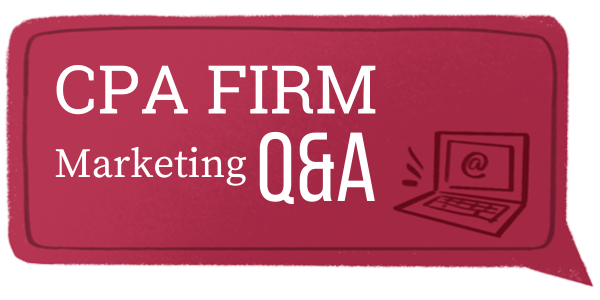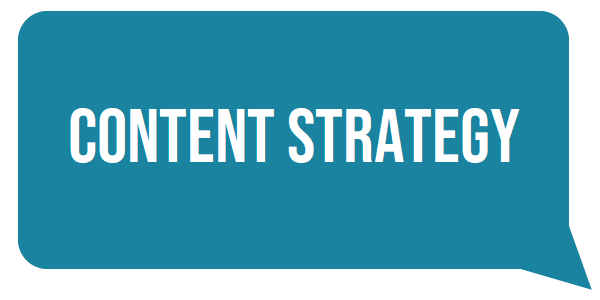
Recently Alison and I were presenting a webinar for BDO specifically for CPA firm administrators who are also tasked with marketing activities. During the Q&A, we were asked a fantastic question: Why are people unsubscribing from our email list? We know many firms find themselves asking this question. While we didn’t have further insight into this firm’s specific situation, we have a hunch that the answer to this attendee’s question has more than one solution. Email is an important activity in most marketing plans, and helps firms stay top-of-mind for clients, prospects and referral sources. Ensuring they receive your communication is essential! Even if you haven’t had an increased number of people unsubscribing, a decrease in engagement could be a precursor to those people eventually opting-out. Here are a few steps firms can take to improve their email subscriber retention.
Is your tech set up correctly?
First, it’s important to ensure your email sending domain is configured properly. Especially now that email clients like Gmail and Yahoo Mail have made some practices mandatory that were once only recommended in order to deliver marketing emails to their users. Specifically, make sure everyone in your database has opted in, and your email design and format are clear with the required unsubscribe link at the bottom. Your CRM should have instructions for all of these pieces. Additionally, your SPF records need to be authenticated in your CRM. Essentially, this tells the recipient’s email that you’re a trustworthy sender, so make sure it’s taken care of properly. Pull in your IT support if you need help authenticating your SPF records as this is done at the domain management level. Here's an article from HubSpot if you want more information.
Did you let people know you would be sending emails during client onboarding?
Surely your firm is only sending interesting articles, timely alerts and important client emails. However, no one likes receiving unsolicited emails. When you’re onboarding a new client, be sure you’re making it clear what emails you send, and the email address they will be coming from. You don’t want to risk being sent to spam because someone does not recognize your email address. This is also the time to encourage clients to update their email preferences so that your emails end up in their inbox, not in promotional emails or spam. Some organizations may require their IT department to “allow” your domain to make sure your emails are properly delivered.
Additionally, are you sure you’re sending email to the right people? Another step to take during your onboarding process is to find out who should be receiving emails. If you work with business clients, maybe different messages should go to different people within the business. Or if you work with individuals, finding out if one or both spouses, dependents or others should receive your emails will help ensure people who want to hear from you are on your list.
Are you sending too many or not enough messages?
There’s definitely a sweet spot when it comes to sending emails, and it’s different for every CPA firm. We typically recommend firms start by sending one monthly email. This will help your firm create a process for regularly sending messages at a cadence you can keep up with. You can let your clients know you send one email a month, which hopefully won’t feel overwhelming. This can be the place you include information about office closures or other firm news, along with articles, reminders about tax deadlines and more. Sending less than one email a month might mean people on your list don’t recognize you in their inbox. Sending too frequently can be overwhelming. Experiment with what works best for your firm.
Are you providing options beyond “in or out”?
This is probably the most important part, and perhaps trickiest to execute when it comes to nurturing your email list. We all receive dozens (hundreds?) of emails every day, and with the technology available today, there’s just no reason to send or receive irrelevant emails. Instead of having just one list for people to subscribe/unsubscribe to, offer choices. Give people choices to get what they want and avoid the rest. With options such as tax/compliance alerts, webinar invites, articles about their industry (list the ones you write for often separately), and firm news, people can throttle the number of emails they get from and feel good that they’re getting what they want, and not what you decided they want.
To execute this, you will need to organize your email lists by the options you provide such as webinars and tax alerts, but while you’re at it, also create lists for industry, firm size, location and any other characteristics that will help you segment your messaging. Sending clients emails with articles, information and reminders that are pertinent to their business or lifecycle stage will encourage them to open, read and look forward to your emails. For example, if you serve both individuals and businesses, consider sending two newsletters, one for each audience. Don’t get caught-up in the exceptions; if an individual tax article is relevant for business owners, you can include it in your business newsletter as well.
When you’re onboarding new clients, ask them what they would like to hear about from you. Consider creating a form for the key contacts at a new client to select their email lists. Let them know that even if they choose not to receive any marketing emails, you would like to keep them on your list in order to send information related to their services (document deadlines, personnel changes, portal signups and so on). Then respect it! Make sure you have a list just for people who only want to receive direct messages. If you think your clients are missing out on important information, reach out to them down the line and ask if they would like to be added to any of your lists. Let them know what type of information they’ll receive and how frequently.
In Conclusion
Subscriber retention isn’t a perfect science, but you can certainly take proactive and thoughtful steps to keep your subscribers happy and engaged. Whether it’s making small tweaks to help make sure your emails are properly delivered, creating a system to make sure your messages are landing in the right place at the right time, or setting expectations with your clients early on, cultivating and nurturing your contacts is an ongoing process. If you’re noticing an increase in unsubscribes, or even reduced engagement, reach out. We’d love to learn more about your email marketing strategy.



